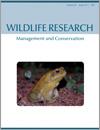Context. Land-use change may represent a major driver for wildlife population trends in most ecosystems all over the world. In addition to land abandonment and forest management transformation in remote areas of developed countries, such as the European mountains, the intensification of human activities has, by and large, affected the settlement opportunities for wildlife species.
Aims. What changes occurred in the structure and extent of land use between 1973 and 2011 in the Central Eastern Alps, Italy? Are the abundance indices of roe deer (Capreolus capreolus) and red deer (Cervus elaphus) driven by these landscape transformations? Is there any relationship between the increase in red deer and the decrease in roe deer abundance?
Methods. The study was conducted in a 1335-km2 area (Central Eastern Alps, Italy). Through GIS photo interpretation techniques and patch analysis tools, we determined land-use changes between 1973 and 2011. Correlations between environmental modifications and climatic conditions, as well as between roe and red deer abundance indices (i.e. catch per unit effort (CPUE) and hunting bag data, respectively) were investigated for the 1973–2011 period by implementing linear mixed models.
Key results. The metrics thus calculated revealed a homogenisation of the woodland area and a general landscape simplification. By examining the effects of the climatic factors supposedly affecting population growth rate, roe and red deer trends seemed to be driven also by land-use evolution. Indeed, in the 1973–2011 period a negative trend in the availability of open areas below the tree line (–4.6%) and of agricultural zones (–1.9%) seemed to disfavour roe deer, while a fast increase in woodlands ( 7.8%), scrublands ( 3.3%) and canopy cover ( 7.9%) was reported to be concomitant to red deer range expansion and density increase. Moreover, red deer growth rate impacted on roe deer population dynamics.
Conclusions and implications. Given the ongoing land-use changes, their effect on roe and red deer population trends and the competition issue between them, these results may help managers to apply an effective adaptive-management planning technique for target locations to keep the ecosystem balanced.





